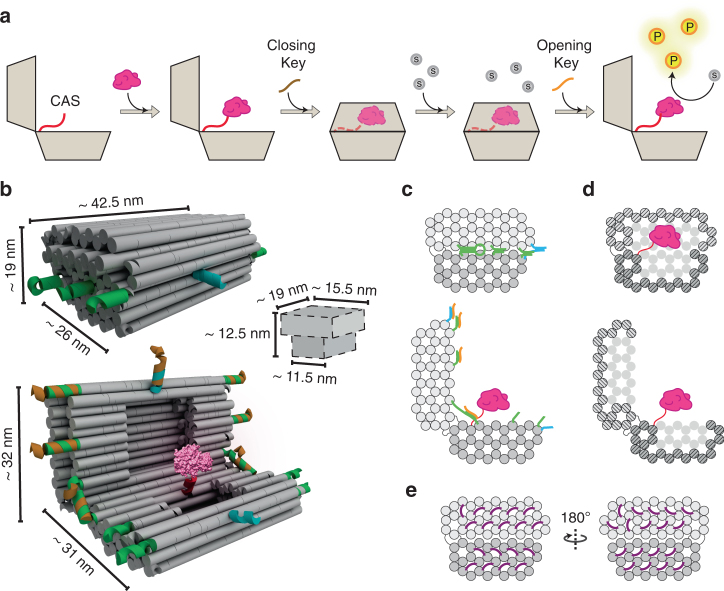Fig. 1.
Working mechanism and structural design of the DNA Vault. a The open nanostructure is loaded with the enzyme (pink) at the cargo-anchoring site (CAS, red) and then closed by adding a sequence-specific closing key (brown). When the substrate (grey circles) is added, the encapsulated enzyme is inhibited from substrate interaction, unless a sequence-specific opening key (orange) is present in solution. Product (yellow circles) is now generated. b Three-dimensional rendering and size of the DNA Vault (DV) in the closed and open states. Cavity of closed structure is schematized. The front lock (cyan), side locks (green), CAS (red) and opening key (orange) are shown. The enzyme shown in pink is bovine alpha-chymotrypsin (aCt, PDB id: 1YPH). c Schematic side-view of enzyme-loaded DV in the closed (top) and open (bottom) states. The DNA helices are visualised as circles. Elements have same colour as in b. d Schematic section-view showing the inner cavity of the enzyme-loaded DV in the closed (top) and open (bottom) states. e End-views showing positions of staple loops (not shown in b for clarity) that cover holes in honeycomb lattice

